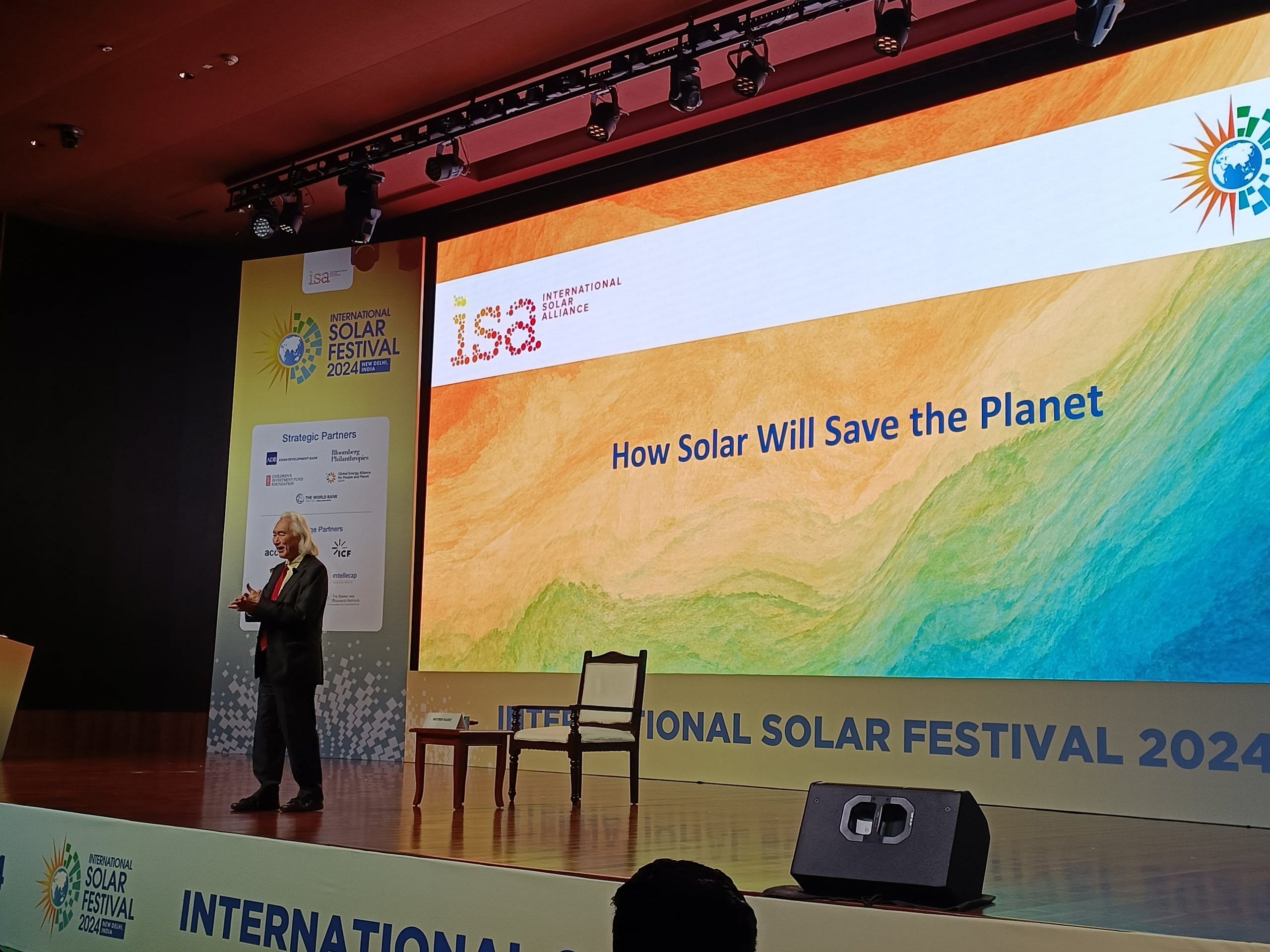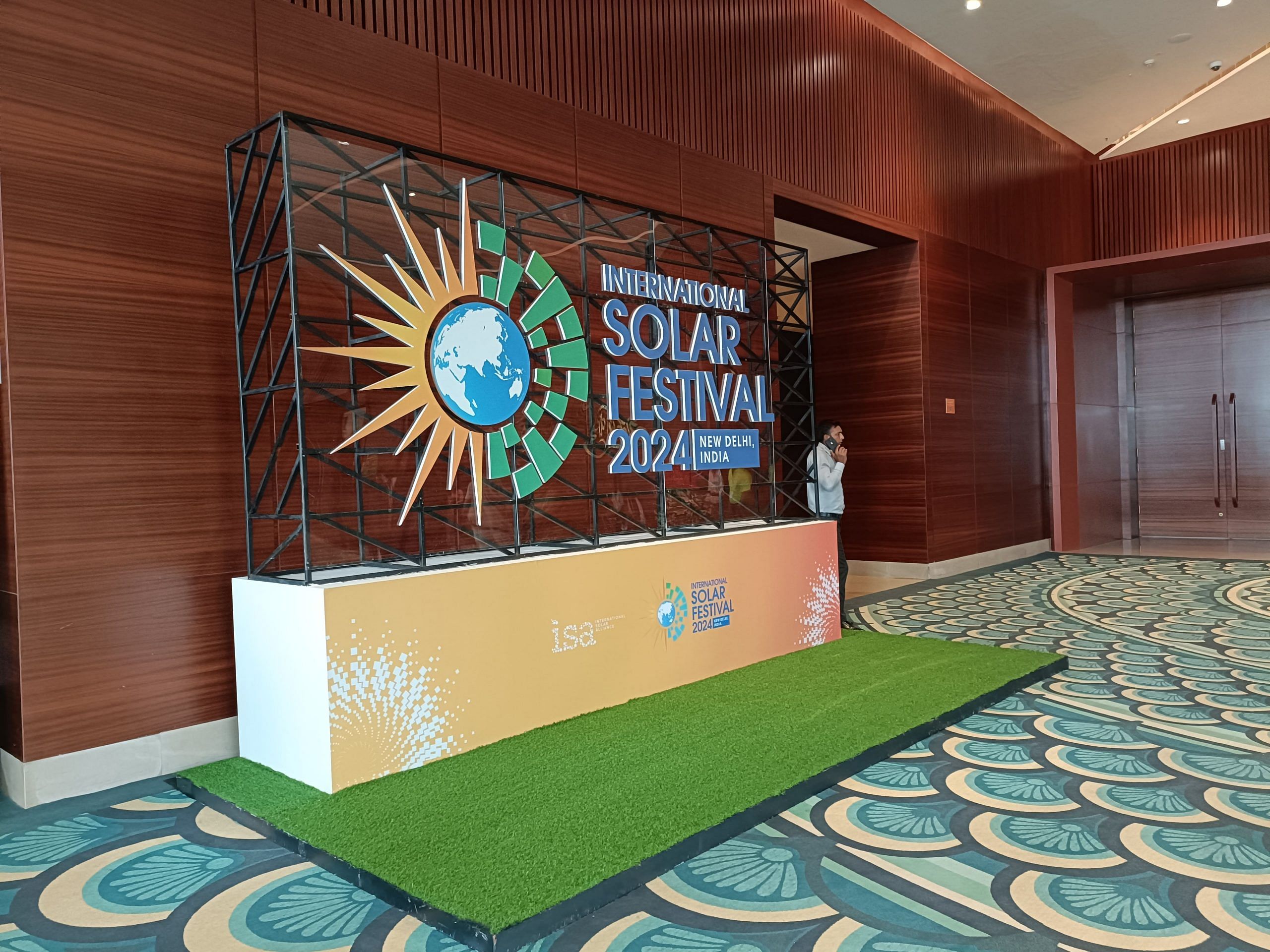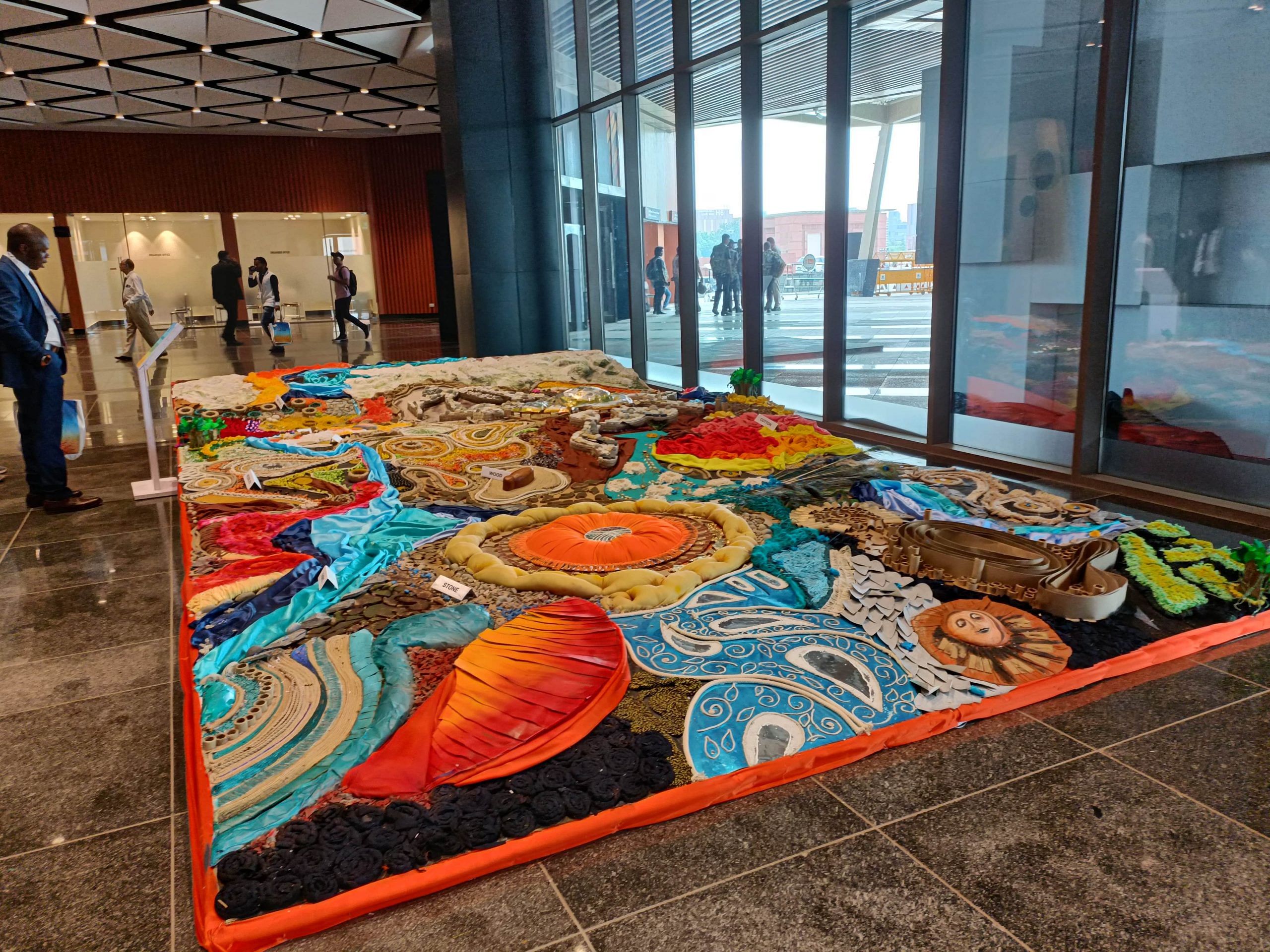New Delhi: A robotic AI assistant, Radha, greeted delegates at the entrance of the Bharat Mandapam, offering them the agenda of the International Solar Festival. The two-day festival began on 5 September and was packed with panel discussions, a massive exhibition of solar companies and research organisations, a virtual reality zone showcasing new technologies, talks by international science communicators like Michio Kaku, and even a performance by AR Rahman.
Inaugurated virtually by Prime Minister Narendra Modi, the International Solar Alliance’s (ISA) first festival was massive in every sense possible—much like India and the world’s strides in solar energy capacity building.
“The International Solar Festival 2024 celebrates the world’s collective journey to a solar-powered future,” said Ajay Mathur, ISA’s director general, at the introductory session. “Solar investment is still concentrated in a few countries, but we are deeply committed to building momentum for universal clean energy access.”

The crowd that ISF attracted was a mix of industry insiders and researchers, discussing the latest updates in solar technology from production to market stages. By including entertainment—in the form of live performances and a stand-up comedy show—as well as plenary sessions on youth, gender, and communities, ISA ensured that there was plenty for students as well as industry insiders.
“I’ve been working in the solar sector for almost seven years now. Mostly our networking would be behind closed doors and after months of trying to reach clients. This is the first time I’ve seen everyone from the producers, installers, investors, and researchers in the solar energy landscape together at once—it’s a gamechanger,” said Kunal Khanna, the EPC Head at SustVest, a renewable energy financing startup based in Gurgaon.
Universal energy access
A staggering $300 billion was invested in the solar sector last year. Yet, much of the solar capital flows primarily to OECD countries, China, and a handful of large developing nations, according to Mathur. In stark contrast, Africa receives only 3 per cent of the global share.
Mathur explained that the ISA has taken it upon itself to rally investors, urging them to direct more funding toward meeting the energy needs of African communities. He also made a major announcement regarding ISA’s solar funding initiative in Africa.
“We are partnering with Africa50 to implement the first regional fund in Africa under the umbrella of ISA’s flagship private sector program, the Global Solar Facility. I believe Africa50 will be an ideal partner for the facility, and we hope to work together to provide clean electricity to 600 million people in Africa,” said Mathur. It was one among many international collaborations announced during the festival.

The nine-year-old ISA is an India-France joint operation that began during COP15 and currently has almost a hundred member countries that aim to facilitate universal energy access, energy security, and transition to renewable energy. PM Modi and Minister for New and Renewable Energy, Pralhad Joshi, also emphasised in their addresses that the ISA’s model to help elevate solar deployment across the world was to focus on both public-private partnerships and international partnerships.
The Australian High Commissioner Philip Green, present at the opening ceremony of ISF, seized the moment to reaffirm the commitments made by Indian and Australian leaders toward strengthening bilateral cooperation in renewable energy.
“We want Indian batteries to be made with Australian lithium, we want Indian green steel to be produced with Australian green iron, and we want Indian solar panels to be made with Australian silica,” said Green, who is Vice Chair of the Asia Pacific (APAC) Region of ISA.
This was in response to Modi’s reference to the PM Surya Ghar Muft Bijli Yojana, through which India plans to install 10 million solar rooftops across the country.
Also read: Sushil Kumar Shinde never played Dalit card, said Mallikarjun Kharge at book launch
Youth-focused exhibition
Multiple stalls lined Hall 14 at Bharat Mandapam, called the ‘Green Zone’ of the festival. From institutes like The Energy and Resources Institute (TERI) to solar panel installation companies like Galo Energy, to even a large food court with a range of offerings, ISF had something for everyone.
“Honestly, I just came for Aakash Gupta’s stand-up session,” Shreya Sharma, a student of literature at Delhi University’s Hansraj College, told ThePrint. “But I also caught CEEW’s panel on women entrepreneurs using solar technology and it was so interesting. I never thought about how gender plays a role in accessing clean energy.”

Sitting in the food court with pizza slices, a group of masters students of TERI School of Advanced Studies shared how they met students from Guinea in the line for the Solaris exhibit. While the conversation between the two groups ranged from the weather in Conakry to Delhi’s chole bhature, both were equally awed by the 360-degree exhibit in the centre of Hall 14 that showcased a city entirely powered by solar energy.
“The solar city exhibit was the perfect round-up of the festival. Solar energy is going to be the future of the world, and isn’t that what the entire event was about?” said Aditya Singh, one of the TERI students.
(Edited by Prasanna Bachchhav)






